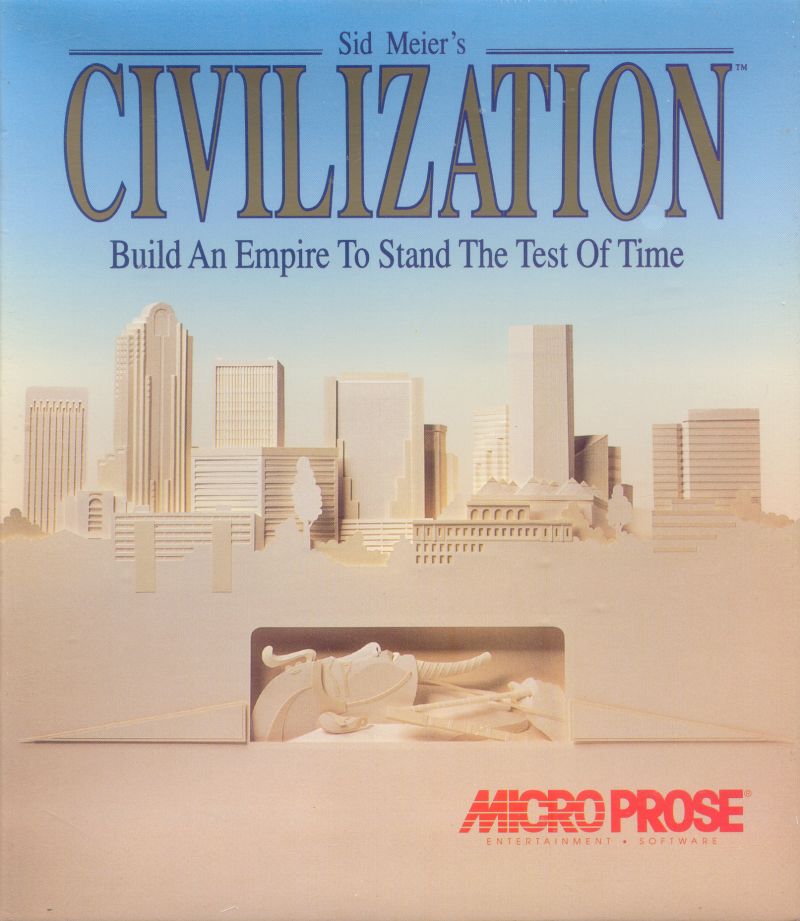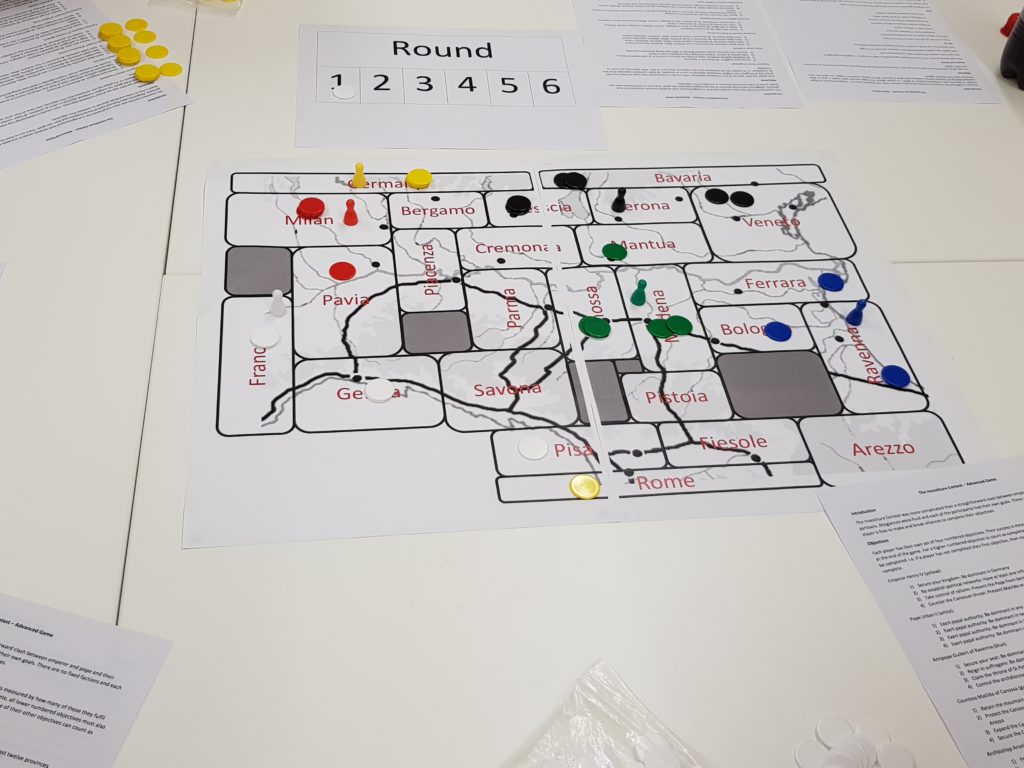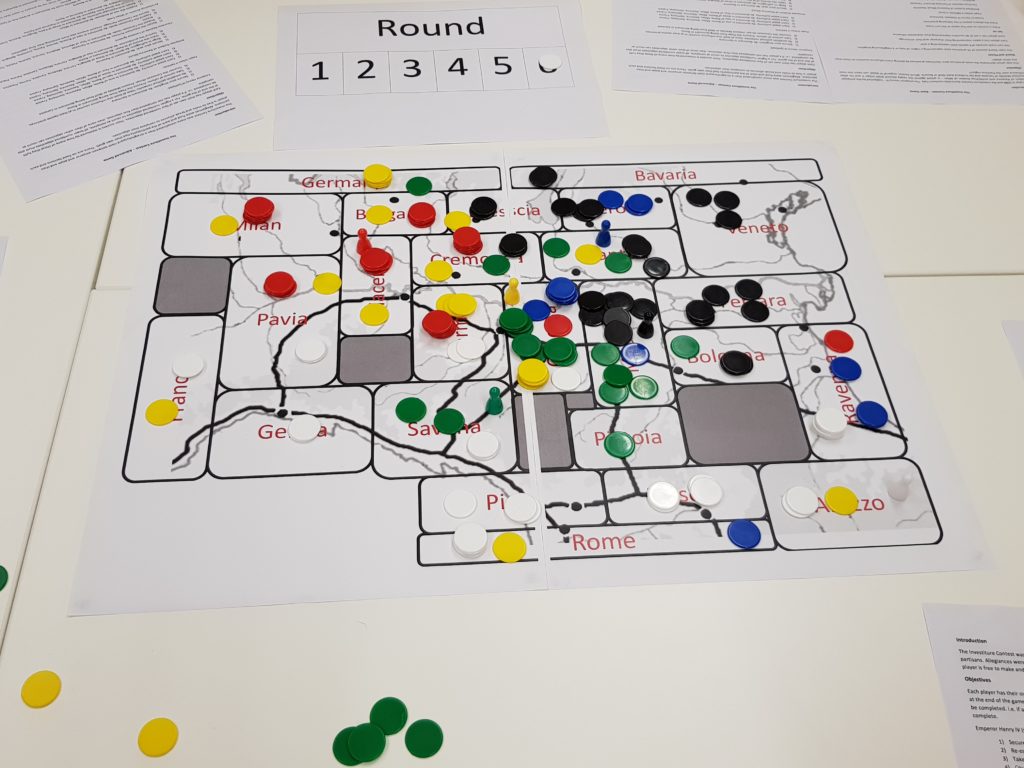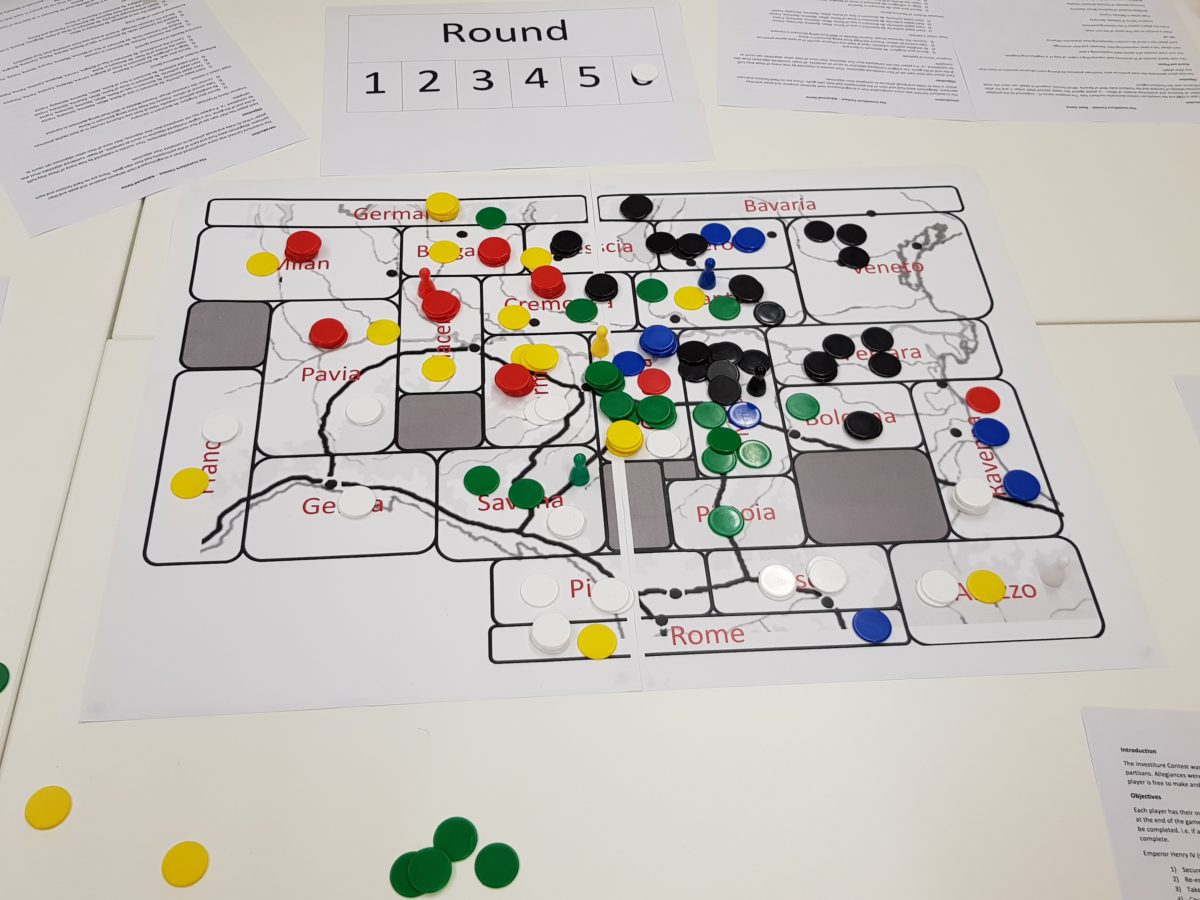Adam Chapman is absolutely right to be cautious about prescribing the use of games in education uncritically. We need to be careful about selecting and using games that are effective as learning tools and that can be meshed with course content (McCall, 2016), and – perhaps most importantly – that are sensitive towards serious topics (like the Holocaust). Ethical and practical concerns are valid and it’s also worth noting that historical games will not be as effective for all students, or as readily accepted by all students. There are plenty of reasons not to use historical game in specific cases, and even more reasons not to roll them out as the universal solution to all pedagogical woes.
But historical games can be effective teaching tools. Although I agree with Adam’s caution, I am much more optimistic about the use of games as teaching tools in the correct environment and with appropriate support. At their most basic, games can introduce players to new periods, themes and places. They can act as points of reference for built environments, geographical features and material culture. Their mechanics and rules represent a truncated but holistic model of some aspect of history – effectively creating a historical narrative for their players to explore. Like Adam says, games can be really useful to look at the ways historical narratives are constructed, presented and communicated through popular media. All of this must be embedded within appropriate content within and outside the classroom: students must be provided with appropriate historical and digital literacies to comprehend a game and its narrative, and the use of games should augment more traditional teaching practices rather than replace them. But, games can demonstrably act as effective teaching tools when used appropriately – there’s a whole string of success stories including several in the forthcoming volume Teaching the Middle Ages through Modern Games and presented at the Middle Ages in Modern Games Twitter conference.
What I’m interested in is how far we can take this. The approaches outlined above are certainly effective for primary and secondary level study, and can be useful as introductory tools at university level. But we can go much further than this. By playing a game, students can interrogate the arguments represented by a its mechanics in much the same way that they would the arguments posed by a journal article or monograph. Through the identification of effective (and ineffective) strategies they may draw out the broader implications of these arguments beyond those intended by the game’s creator, in effect considering the place of these arguments within the broader field of study, just as they would within a historiographical survey. Ultimately, by modding the game (or even creating their own game) students may nuance its argument, changing the rules to better reflect their understanding and theory of historical events and forces, and in doing so participating in a form of historical debate with the game’s creators and their fellow students. Taken as a whole, and with the necessary support and context, these activities can develop and demonstrate critical historical skills and thinking to the level of undergraduate or postgraduate study or even beyond.
The crucial element here is that to be most effective, games should be presented and explored as arguments about the past to be critiqued by the player rather than empirical statements to be learned by rote.
Critical Play
Within the historical game studies scholarly community, it is almost universally accepted that the mechanics of historical games inherently represent a cluster of interacting arguments. What is contested is whether these arguments can be useful pedagogically or academically…
Game mechanics represent an abstract model of their subject matter. Assassin’s Creed models the environment physics of a free-running killer and crowd reactions to their presence. Patrician models supply and demand and more complex economic systems across the Hanseatic League. Civilization models the socio-economic interactions of global powers over millennia. These models are the products of a series of historical arguments, assumptions, and abstractions made explicitly or implicitly by the game developers. Hence, Assassin’s Creed argues that a stealthy blow can kill almost any target, Patrician suggests that more profitable goods came from more distant locations, and Civilization ties population growth firmly to food surplus: a city will grow when it has accumulated sufficient stores of food. Taken as a whole, the mechanics of these games can create more sweeping arguments: that individuals can drive great historical change in Assassin’s Creed (Joly-Lavoie, 2018); that trade is a zero-sum game in Patrician (Peterson, Miller and Fedorko, 2013); or that the success of any historical polity ultimately comes down to expansionism, imperialism and colonialism in Civilization and that this success must follow a Western narrative of technological progress and determinism (Mukherjee, 2017).

Civilization (MicroProse, 1991)
Critical play can allow students to identify these core arguments from a game’s mechanics. To progress or succeed in a game, players must learn its rules and how to manipulate them. In the case of historical games, they must become familiar with the abstract historical models the game presents. Care must be taken to ensure that students retain a focus on the connection between the game’s rules and what they represent, but with the caveat it is entirely possible for students to ‘read’ a historical game in the same manner that they would an academic text: to identify the argument made through the game and to consider its veracity in the context of their broader research into and understanding of the period, events and themes. Criticising the shortcomings of the narratives presented through historical games mirrors the critique of academic arguments in more traditional teaching. Thus, students may highlight the limitations of Civilization’s approach to population growth as an immediate product of accumulation of food and highlight the relevance of social, environmental or political factors. They may contrast the Great Man history of Assassin’s Creed with more structuralist approaches.
Games allow further advanced scholarly engagement through their requirement that the player develops strategies. Establishing more effective routes through a game is a central element of play: in many cases this is necessary to progress. Players must consider the best approach to their target in Assassin’s Creed, how best to make a profit in Patrician, and how best to surpass their neighbours within the political, cultural, and military models of Civilization. Analysing these strategies may help students to think about the motivations and behaviours of historical actors as implied by the victory conditions and rules of the game and this provides a further avenue for the critique of the game’s arguments: if, on reflection, the behaviour required to win the game is non-sensical, then the limitations of the game’s arguments are underlined. In this manner, critical play offers an alternate approach to scholarly criticism which may nevertheless be academically sound.
To take this process to its logical conclusion, the modification of historical games allows players to engage in scholarly debate. By changing the rules of a game, players change the arguments that it makes. Tweaking the model of supply and demand in Patrician may create a more thorough and deeper account of the nature of the economic networks of the period. Changing the victory conditions of Civilization to preclude success through conquest may allow for an argument which minimises imperialism and colonialism as measures of success. Adjusting the technology trees of the same game to provide a more diverse pattern of change and which incorporates disadvantages to the acquisition of new technologies could go a long way to countering the Eurocentric and Whiggish views of history common within the franchise.
Each of these related approaches share the same basic premise: that the models within the game are not absolute claims to historical truth, but rather historical arguments to be critiqued, countered, and possibly rejected outright. By playing and considering the game critically, students can engage in the same level of historical thought they would do when critically reading scholarly historical texts – albeit in a different format and in a different manner.
Modding in the Classroom
These methods have been used to great effect in several classrooms. Critical examination of historical models has been conducted using games from Civilization V (Ortega, 2015) to Assassin’s Creed (Vas, 2017). Game modification and creation has been deployed as a means of historical debate and argument using a range of games including Civilization IV (Kee and Graham, 2014) and Twine (Boom et al., 2020).
I’ve been using in person games of various formats (board, card, roleplay etc.) for about a decade as teaching tools. I’ve largely avoided using computer games because of financial, technological, and skillset limitations, although these issues can certainly be mitigated with the correct resources. Most recently, I’ve been using a custom-built board game (The Investiture Contest) towards the end of a module of the same name to get students to think about political networks and dynamics within this eleventh century conflict between Pope and Emperor. The game places up to six players in the roles of key figures (including Pope Urban II and Emperor Henry IV, alongside various bishops and secular magnates) and challenges them to exert influence over northern Italy.

After receiving a brief overview of the ways in which games can represent history, students play a basic version of the game – which places them in Papal and Imperial teams, whichever team influences the most provinces at the end of the game wins. They then discuss the arguments that the mechanics and victory conditions represent and consider their limitations. Students then play a more advanced variant – where each player has a series of objectives to complete which will draw them into potential conflict with different players over the course of the game. After discussing the impact of these difference victory conditions on the argument presented by the game, students propose their own modifications to the game to better represent different theory around the conflict and the nature of political networks in this period.

Broadly speaking, the exercise has been a success. Based on their research and analysis across the course, the students were collectively able to identify the arguments presented through the basic and advanced versions of the game: respectively that the Investiture Contest was a simple binary conflict between Pope and Emperor, and that the conflict was more nuanced with each participant following their own shifting goals. They identified how these arguments aligned with the historiographical trends they have engaged with during the module. Some students highlighted other implications of the game rules around the construction and maintenance of spheres of influence in this period – including an emphasis on the importance of the control of particular sites and routes, and the significance of itinerant rulership. Ultimately, with appropriate support, the students were able to construct and play their own version of the game and critique the implications of their changes.
The exercise was a qualified success. Students saw the benefit of considering these issues and events from a different (and non-traditional) perspective. Several students noted that this allowed them to expand their understanding and analysis of the conflict and broader themes and used this to feed into their end of semester assignments. A handful of students took their experience beyond the module and considered representations of history in other games to help develop their historical thinking. While the effects varied across the group, some students were positively and significantly influenced by their experience.
Not Better, but Different
Using games in this manner has a lot of potential, but there are clearly limitations and caveats to consider. The game was heavily embedded within a module and traditional learning methods, and its use was supported through careful instruction on the use of games for history and the development of a relatively simple set of rules. Using a game like this requires an appropriate grounding in both historical and ludic approaches and so it must be used as a part of a broader learning portfolio rather than a stand-alone activity. The novelty of the exercise perhaps limited its effectiveness as students spend a fair length of time familiarising themselves with the approach and considering the implications of any rule changes they proposed. While the game was broadly useful, its success varied substantially between students partly as a consequence of varying experience with gaming, but also because (as is the case with any learning approach) learning through games will be more effective for some students than others.
But these limitations do not preclude the use of games for learning purposes, even at the most advanced levels of study. They must be carefully selected or designed, integrated closely into the curriculum with the support of traditional forms of teaching, and students must be instructed on their use. They require that teachers be familiar with theory and practice around games as teaching tools and familiar with general game concepts. This approach can certainly require a time commitment when preparing a course, but this is to a certain extent a one-off commitment – after the course is created, it is much easier to maintain, and once the methods are understood they may be applied in various courses. Likewise, a classroom time commitment is necessary for this approach, but this does not need to be substantial – especially if a simple ruleset is employed – and is justified by the learning benefits. Using in person games rather than digital games further mitigates many of these issues. Games should not replace traditional teaching methods wholesale, but they can provide valuable experiences and insights if used carefully and as a considered part of a history course – and if they are presented as arguments rather than facts.
Games are not universally better pedagogical tools than traditional methods. They won’t always be the best way to communicate ideas. Some students won’t react well to them. But they are different tools. They express history in an alternate format and through unique methods. In some cases, they are incredibly effective at communicating ideas and building critical skills. They will not be the most effective approach for every student in every class led by every teacher. But under the correct circumstances they can significantly augment learning experiences.
It is complicated. But that’s not reason enough not to do it.
Robert Houghton is a Lecturer in Early Medieval History at the University of Winchester. His research focuses on Italian political and social networks, and on medievalist computer games. Recent publications include Playing the Crusades and The Middle Ages in Modern Culture. Rob has worked with The Public Medievalist and with Paradox Interactive, and is currently the lead organiser for The Middle Ages in Modern Games Twitter conference.
References
Boom, K.H.J. et al. (2020) ‘Teaching through Play: Using Video Games as a Platform to Teach about the Past’, in Hageneuer, S. (ed.) Communicating the Past in the Digital Age: Proceedings of the International Conference on Digital Methods in Teaching and Learning in Archaeology (12th-13th October 2018). Ubiquity Press, pp. 27–44. doi:10.5334/bch.
Joly-Lavoie, A. (2018) ‘Assassin’s Creed : synthèse des écrits et implications pour l’enseignement de l’histoire’, McGill Journal of Education, 52(2), pp. 455–469. doi:10.7202/1044475ar.
Kee, K. and Graham, S. (2014) ‘Teaching History in an Age of Pervasive Computing: The Case for Games in the High School and Undergraduate Classroom’, in Kee, K. (ed.) Pastplay: Teaching and Learning History with Technology. University of Michigan Press, pp. 270–291. doi:10.2307/j.ctv65swr0.17.
McCall, J. (2016) ‘Teaching History With Digital Historical Games: An Introduction to the Field and Best Practices’, Simulation & Gaming, 47(4), pp. 517–542. doi:10.1177/1046878116646693.
Mukherjee, S. (2017) Videogames and Post-colonialism: empire plays back. Cham: Palgrave Macmillian.
Ortega, S. (2015) ‘Representing the Past: Video Games Challenge to the Historical Narrative’, Syllabus, 4(1), pp. 1–13.
Peterson, R.D., Miller, A.J. and Fedorko, S.J. (2013) ‘The Same River Twice: Exploring Historical Representation and the Value of Simulation in the Total War, Civilization and Patrician Franchises’, in Kapell, M. and Elliott, A.B.R. (eds) Playing with the past: digital games and the simulation of history. New York: Bloomsbury Academic, pp. 33–48.
Vas, J. (2017) ‘Four Categories Of Video Games in the Practice of History Teaching’, Staféta, 2, pp. 211–227.
